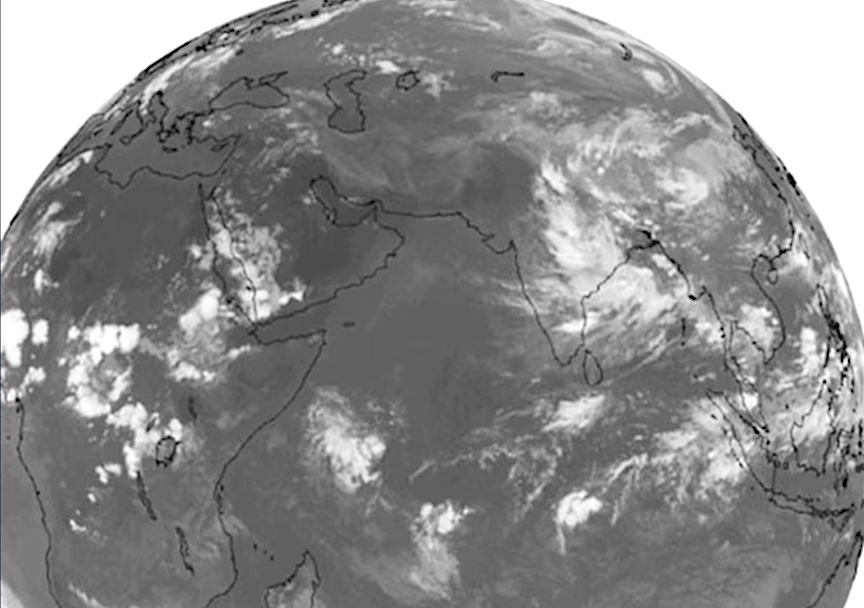
The U.S. Space Force accepted the transfer of a second geostationary weather satellite from the National Oceanic and Atmospheric Administration to extend persistent weather coverage of the Indian Ocean region until the 2030 timeframe.
Through the Electro-optical Infrared Weather System-Geostationary mission, governed by partnership agreements between the Department of the Air Force and NOAA, the Space Force uses a residual NOAA Geostationary Operational Environmental Satellite to collect cloud imagery and perform environmental reconnaissance over the Indian Ocean region.
The partnership is a cost-effective solution, delivering mission-critical weather data to the joint force. Accurate weather data is essential for planning and execution of air, land, and maritime military operations.
“EWS-G is a prime example of innovation and the leveraging of partnerships,” said Lt. Col. Joseph L. Maguadog, Space System Command’s EO/IR Weather System Program Office materiel leader. “The repurposing of GOES-15 and residual NOAA ground equipment accomplished the mission at a fraction of the procurement cost of a brand-new system.”
The first EWS-G spacecraft transferred from NOAA, referred to as EWS-G1, has performed its role since September 2020. Based on remaining fuel estimates, the spacecraft is projected to reach its end of service life February 2024.
While the Space Force is exploring long-term solutions for persistent weather coverage in the region beyond 2030, the service required a replacement to succeed EWS-G1 and asked NOAA to evaluate the possibility of transferring a second residual satellite.
After NOAA’s new GOES-18 became operational in January 2023 and congressional approval for the transfer was received in June, the Space Force accepted GOES-15 and the satellite was re-designated EWS-G2.
The second spacecraft is currently drifting towards the Indian Ocean region and will reach its assigned orbital location November 2023.
EWS-G2 will continue to use an existing Remote Ground Station in Western Australia put in place in 2020 to support the EWS-G mission. As it currently does with EWS-G1, NOAA will operate EWS-G2 on behalf of the Space Force from the NOAA Satellite Operations Facility in Suitland, Maryland, and Wallops Command and Data Acquisition Station in Wallops Island, Virginia.
By SAF/PA Staff Writer Secretary of the Air Force
